Public Employee Press
DC 37 News
Union gains five new locals to expand member services
Following a two-year deep dive into the functionality of Civil Service Technical Guild Local 375, it was determined that the creation of five new local was in the best interest of all members. Central to this review was an aggressive AFSCME Strong program, resulting in thousands of membership card resigns and the conversion of hundreds of fee-payers to regular members. The creation of a new, more democratic and transparent union was the result of dozens of chapter meetings, monthly delegate assemblies and presidents’ meetings, and hundreds of one-on-one conversations.
Local 375 continues to exist, with members working all across city agencies. Earlier this summer, Local 375 members voted to adopt a new constitution to streamline the governance of the local and make elected leaders more responsive to the membership. Shortly, there will be local elections to elect new officers.
The American Federation of State, County and Municipal Employees–the national union of District Council 37–put Civil Service Technical Guild Local 375 under administratorship in August 2016.
AFSCME officials took action to restore full democracy to the local and promised to protect the members’ right to fair elections and their right to full participation in the decision-making process of the union.
The five new DC 37 locals, which have adopted their constitutions and elected officers, will represent employees at the School Construction Authority (Local 1740), the Health Department and Office of the Chief Medical Examiner (Local 3005), NYPD Technical Professional Employees (Local 3778), NYC Transit employees (Local 3652) and upstate workers with the Dept. of Environmental Protection (Local 3599). Here, Public Employee Press profiles the new locals.
Protecting our water system
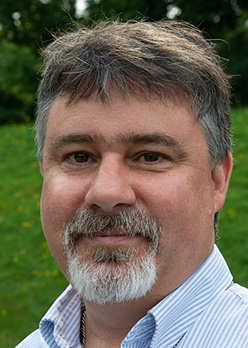 Richard Kowalczyk
Richard Kowalczyk
President, Local 3599
Richard Kowalczyk is the newly elected president of New York City Dept. of Environmental Protection Technical Professional Employees Local 3599, which received its charter from AFSCME President Lee Saunders in June.
Local 3599 represents 350 scientists, engineers, construction project managers, industrial hygienists, chemists and associate chemists, and other technical professional employees at the Dept. of Environmental Protection, including its DEP Bureau of Water Supply, Bureau of Engineering and Construction and other facilities located upstate, outside the five boroughs of New York City. Kowalczk is a scientist at the Hawthorne facility’s water quality division, where he’s worked for 26 years. He was Chapter 40 president in Civil Technical Guild Local 375. The new local was created from Local 375 and is serviced by the union’s Blue Collar Division.
“Our members are mostly working in non-competitive titles outside the civil service criteria,” explained Kowalczyk. “Many are hired as non-competitive employees in titles that have no civil service list, so the union is concerned that appointments and hirings at DEP are balanced.”
DEP facilities encompasses more than 2,000 square miles of watershed and reservoirs. Its employees in Local 3599 live in upstate New York counties and New Jersey, Connecticut, and Pennsylvania.
“I am working with Executive Director Henry Garrido and DC 37, who are supporting our efforts to meet the challenge of providing upstate members with better service,” Kowalczyk said. “The members really want to participate in their union and they showed that by electing the new Local 3599 leadership.”
“Now we are physically in the same vicinity, so members see us,” said Kowalczyk. “We have better, more direct contact with the membership, it’s a godsend. We can attend to the issues and needs of members without long waits or the logistical nightmare of coordinating travel to bring union leaders, chapter chairs, members and management to the table under one roof.”
“By establishing better links between the bureau management and the union,” Kowalczyk said, “we can better serve the members and address issues promptly.”
Guaranteeing school safety
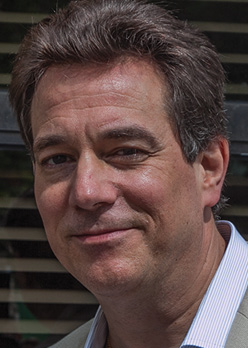 Charles Komlo
Charles Komlo
President, Local 1740
Members of the new School Construction Authority Local 1740 chose the local’s number from the section of the law creating the SCA decades ago that requires 40 percent of the agency’s work to be done in-house.
Back then, the union fought for inclusion of the section in order to protect the jobs of its members and the pocketbooks of taxpayers. The city’s school board decided to set up the agency as a way to prevent a recurrence of the corruption that plagued construction projects in the 1970s and ’80s.
For many years, a lot of workers in the school construction field felt they lacked a voice and were underrepresented as they were grouped into a tiny chapter of Civil Service Technical Guild Local 375. This year, Local 375 was spit into six locals to promote union democracy and improve representation.
The union leadership at SCA projects a great enthusiasm and deep commitment as they embark on strengthening the union and encouraging greater membership involvement at the SCA.
Whereas in recent years, a good number of the workers were indifferent and disenchanted about the union, today 98 percent of them have renewed their commitment by signing membership cards, according to Local 1740 President Charles Komlo. But this didn’t happen overnight. Komlo and Executive Board member Andy Jordan said their team worked hard to discuss the value of unions with their coworkers. But their message was not simply about bread and butter issues. It also stressed how the union and civil service system contribute to the SCA’s mission of providing safe schools for the city’s 1.2 million students. Members take a lot of pride in the fact members have never missed a deadline for building a school.
Lorraine Barcant, the local’s vice president, said she and others like to refer to the ethos of the agency’s workers as “one shop shopping.”
That’s because the workers have the skills and talents needed to carry out projects from the beginning to end.
The local’s members include designers, architects, blue-collar workers, construction project managers, and inspectors, plan examiners, support staff and others.
Keeping New Yorkers healthy
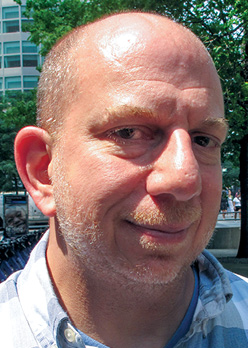 Jeff Oshins
Jeff Oshins
President Local 3005
Jeff Oshins, a City Research Scientist 2 at the Dept. of Health and Mental Hygiene for 15 years, is the elected president of Local 3005 New York City Health Department Technical Professional Employees.
Local 3005 represents almost 1,000 members in 19 titles at DOHMH and the Office of Chief Medical Examiner (OCME), including architects, OCME criminalists, scientists, chemists and engineers, graphic artists, space analysts, physicists, water ecologists, project managers and others.
An activist for 25 years, Oshins served as recording secretary and vice president of Civil Service Technical Guild Local 375’s Chapter 10.
As a provisional Public Health Advisor in Local 768 some 26 years ago, Oshins got hooked on labor activism at union meetings with then-supervisor Rachel Matos.
“Making things right, fighting inequalities is my passion. I’ve worked within the union movement to fight for workers’ rights, gay rights—it’s in my blood,” said the Pride at Work and Lesbian and Gay Issues Committee (LAGIC) member.
Oshins climbed the civil service ladder at DOHMH, earned a master’s degree, passed civil service exams and was promoted to City Research Scientist 2 in the agency’s Bureau of HIV Services.
A third generation union member, His grandfather was a tailor and shop steward in the International Ladies Garment Workers Union; his dad was a U.S. Postal Service letter carrier.
“RiseUp, AFSCME’s convention theme, inspires me to use the post-Janus momentum to build our union membership,” Oshins said about the politically-charged U.S. Supreme Court decision. “Unions advance the causes of workers and improve their lives. It’s a legacy I am proud of. Janus will not stop us!”
Using science to solve crimes
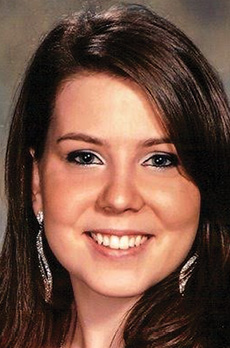 Maria Petela
Maria Petela
President Local 3778
With a membership of around 300, New York City Police Department Civilian Unit Local 3778 represents non-uniformed workers at the NYPD.
Most of the local’s members are Criminalists who perform chemical and physical forensic analyses of evidence in criminal investigations.
Criminalist Maria Petela works in the police laboratory at NYPD. Her primary duties involve testing for controlled substances. Now she plays an additional role as the first president of Local 3778.
Elected in May, Petela represents a new generation of union leaders that has emerged from the restructuring of Civil Service Technical Guild Local 375.
“I was with the city and the union for more than five years. While I never held any positions in the union, I was active,” she said. “I would go to meetings, workshops and events the union hosted.”
As a union leader, Petela stresses implementing innovative ideas of communicating with her members.
“I want to bring our local into the 21st century. My focus is to modernize the way information is reported to the members. I want them to also be aware of everything that the union has to be able offer to them,” said Patela.
“It is vital that they know their benefits and rights,” she said.
Local 3778 represents 15 job titles at NYPD: Administrative Architect, Administrative Project Manager, Architect, Associate Project Manager, Assistant Architect, Assistant Chemical Engineer, Assistant Mechanical Engineer, Criminalist, Graphic Artist, Mechanical Engineer, Operations Communication Specialist, Principal Title Examiner, Program Research Scientist, Space Analyst and Supervisor of Mechanical Installation Maintenance.
making New York City’s Transit System run
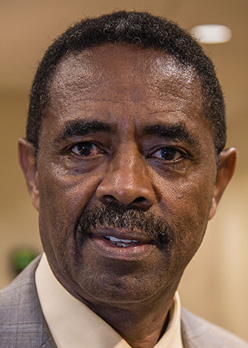 Gerald Lezeau
Gerald Lezeau
President Local 3652
The 836 members Local 3652 at NYC Transit ensure that the city’s subway system is safe.
They are also in charge of maintaining, renovating and building stations.
The local includes workers in 28 professional and technical titles. They are based in offices at 2 Broadway in Manhattan and 130 Livingston St. in Brooklyn and other satellite offices in the five boroughs.
“Local 3652 members’ responsibility is to improve New York City’s Transit System by designing and building world-class capital projects, as well as to provide safe, clean and reliable cars for our customers,” said Local 3652 Vice President Annette Brown, who is a Transit Railcar Technology Specialist.
Members work in the agency’s Capital Program Management, Car Equipment Engineering and Maintenance of Way offices.
Members do design work for station renovations and construction. TA workers were responsible for the rebuilding of Manhattan’s Fulton Street station after it was destroyed in the 911 terrorist attack.
Besides station renovations, CPM work includes monitoring 665 miles of track, 472 stations, including 117 made accessible with ramps and elevators for customers with disabilities, right of way and electronic repairs, inspection, and the ongoing installation of a state-of-the-art “communication-based” signal system to replace the old “block” signal system and electro-mechanical signals.
Members at the Car Equipment Department maintain and repair 6,122 passenger subway trains and 460 works cars at 14 maintenance shops and two overhaul shops. They also are involved in making sure newly purchased cars meet specification and are in compliance with Transit Authority standards.
At the bus department, members work on specifications of the bus fleet, which in 2016, included 5,710 vehicles — the most in North America. NYC Transit was the first public transportation system in the world to make all its buses accessible to riders with disabilities.
Brown said members are very excited about the union, which is focusing on dramatically improving union representation of the NYC Transit employees. “We are committed to protecting our members’ rights and fighting for equality,” Brown said.
“Before the Local 375 split up occurred, members felt skeptical about the plan for the new, independent local,” Brown said. “However, now that Local 3652 is set up, we have a greater voice and feel we have a stronger union.”
“We are now in the position of where we can better negotiate our own contract,” Brown said. “We feel have leverage at the bargaining table.”


